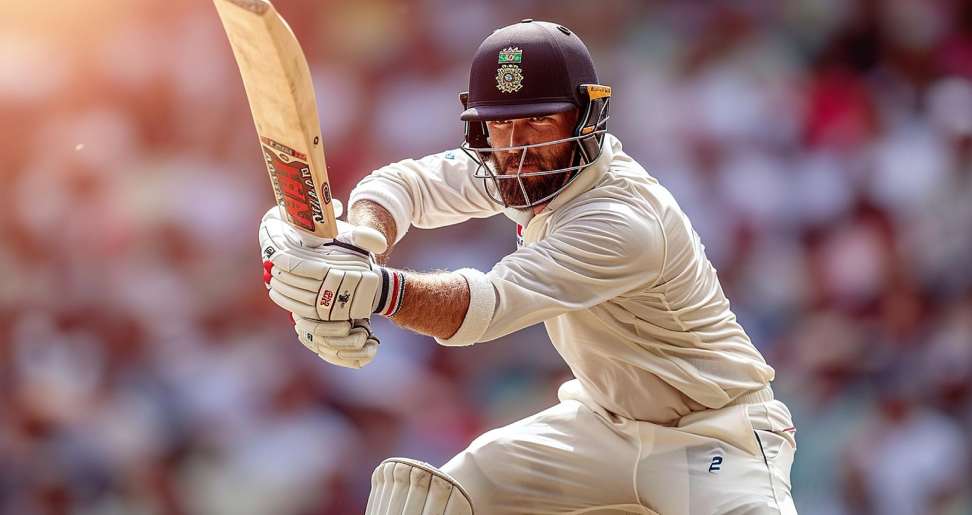Cricket, a game of endurance, precision, and strategy, demands not only sharp skills and tactics but also peak physical fitness. Elite cricketers, like Virat Kohli, Ben Stokes, and Jasprit Bumrah, exemplify athletic prowess, proving that fitness is as crucial to their success as their mastery of cricketing techniques. These athletes follow rigorous fitness regimens to maintain their competitive edge on the field. From strength training to cardio exercises, the fitness routines of these cricketers are meticulously planned to ensure they remain at the top of their game. Fitness is no longer just about staying in shape; it has become an integral part of their professional lives. In this article, we will delve into the specific fitness regimens that elite cricketers follow to stay in peak condition, highlighting how these practices contribute to their success. Whether you are a fan of the game or a fitness enthusiast, understanding these routines can offer valuable insights into achieving your fitness goals, just like the pros. Fitness enthusiasts can learn a lot from these top athletes. One platform, Laser247, often discusses the evolving fitness standards in cricket, shedding light on how cricketers’ training routines have evolved over time.
Understanding the Demands of Cricket
Cricket is a sport that requires a unique combination of skills, including hand-eye coordination, agility, speed, and endurance. Each role in cricket, from a batsman to a bowler to a fielder, has specific physical demands. For instance, a fast bowler needs explosive strength and endurance to maintain high speeds throughout a game, whereas a batsman requires agility, quick reflexes, and mental stamina to stay focused for long periods. This variety in physical requirements means that cricketers need comprehensive training regimens tailored to their specific roles on the team.
Training sessions for cricketers typically start with a warm-up routine, incorporating dynamic stretches and light aerobic exercises to increase blood flow to the muscles, enhancing flexibility and reducing the risk of injury. This is followed by sport-specific drills, focusing on batting, bowling, or fielding skills, depending on the player’s specialization. According to fitness experts from platforms like Play99exch, modern cricketers also integrate cross-training exercises into their routines to build overall body strength and endurance, crucial for maintaining performance throughout a grueling match or series.
Strength Training: Building Core Power
Strength training forms the cornerstone of most cricketers’ fitness regimens. It is essential for developing the power and explosive strength needed for batting, bowling, and fielding. Elite cricketers often focus on compound exercises such as squats, deadlifts, bench presses, and shoulder presses. These exercises target multiple muscle groups simultaneously, building functional strength that translates directly to the movements required on the field.
Core strength is particularly crucial for cricketers. A strong core aids in balance and stability, essential for maintaining posture while batting and bowling. Exercises like planks, Russian twists, and medicine ball throws are staples in a cricketer’s workout routine, helping to develop the core muscles that support quick changes in direction and explosive movements. In addition to traditional weightlifting, many cricketers incorporate plyometric exercises, such as box jumps and clap push-ups, into their training. These exercises enhance muscle elasticity and explosive power, allowing for faster sprints, higher jumps, and quicker reflexes – all vital attributes in a high-intensity cricket match.
Cardiovascular Training: Building Stamina and Endurance
Cricket matches, especially test matches, can last for hours or even days, requiring players to have high levels of stamina and endurance. Cardiovascular training, therefore, is an integral part of a cricketer’s fitness regimen. Elite players often engage in various forms of cardio workouts, including running, cycling, and swimming, to build their aerobic capacity. Interval training, which involves alternating between periods of high-intensity exercise and rest or low-intensity exercise, is particularly effective in boosting cardiovascular fitness and endurance.
For cricketers, cardio training is not just about running long distances. It also involves short bursts of high-intensity running to mimic the demands of sprinting between the wickets or chasing a ball in the field. High-Intensity Interval Training (HIIT) is popular among cricketers because it improves cardiovascular fitness and helps burn fat while preserving muscle mass, a crucial factor in maintaining peak physical condition throughout the cricketing season.
Flexibility and Mobility Training: Enhancing Agility
Flexibility and mobility are often overlooked but are critical components of a cricketer’s fitness regimen. Flexibility training helps improve the range of motion in the joints, reducing the risk of injury, while mobility exercises enhance muscle function and coordination. Elite cricketers engage in regular stretching routines, including both dynamic and static stretches, to keep their muscles flexible and ready for the rapid, explosive movements required during a game.
Yoga and Pilates have also become popular among cricketers for their ability to improve flexibility, core strength, and mental focus. These practices help cricketers develop better body awareness, balance, and control, contributing to improved performance on the field. Moreover, mobility exercises, such as foam rolling and resistance band workouts, are essential in maintaining joint health and preventing injuries, allowing players to perform at their best throughout the season.
Recovery and Nutrition: The Pillars of Sustained Performance
Recovery is a critical aspect of any athlete’s training regimen, and cricketers are no exception. Elite cricketers follow a disciplined recovery routine that includes adequate rest, hydration, and nutrition to ensure their bodies are fully recovered and ready for the next game. Nutrition plays a vital role in recovery; a balanced diet rich in proteins, carbohydrates, and healthy fats is essential for repairing muscle tissues and replenishing energy stores.
Hydration is equally important, especially in a sport like cricket, which is often played in hot and humid conditions. Proper hydration helps maintain optimal body function, reducing the risk of cramps and heat-related illnesses. Many cricketers also use recovery techniques like ice baths, massages, and compression garments to reduce muscle soreness and speed up recovery.
Mental Conditioning: The Psychological Edge
Physical fitness is only part of the equation for elite cricketers. Mental conditioning is equally crucial in a sport where concentration, strategic thinking, and mental toughness play a significant role in performance. Cricketers often work with sports psychologists to develop mental resilience, focus, and composure under pressure. Techniques such as visualization, mindfulness meditation, and breathing exercises are commonly used to enhance mental strength and clarity, helping players stay calm and focused during high-pressure moments.
Platforms like Lotus365 often highlight the importance of mental conditioning in sports, discussing how top athletes integrate these practices into their routines to maintain a psychological edge over their opponents. By focusing on both mental and physical fitness, cricketers can perform at their best, no matter the challenges they face on the field.
Conclusion
The fitness regimens of elite cricketers are comprehensive, covering all aspects of physical and mental conditioning. From strength and cardiovascular training to flexibility exercises and mental conditioning, these athletes leave no stone unturned in their quest for peak performance. The dedication to fitness seen in modern cricketers is a testament to the evolving nature of the sport, where physical and mental preparation is as important as technical skill. Whether you are an aspiring cricketer or a fitness enthusiast, adopting some of these training principles can help you achieve your fitness goals and stay in peak condition, just like the pros. Remember, the journey to fitness is continuous, and the key lies in consistency, dedication, and the willingness to push beyond one’s limits.
Also Read:-
- Beyond the Lightshow: Unveiling the Power of Laser Cutting
- Why Seeing a Foot Doctor is Key to Lifelong Mobility and Comfort
- 5 Reasons Why You Should Start Preparing for the Bar Exam Early

